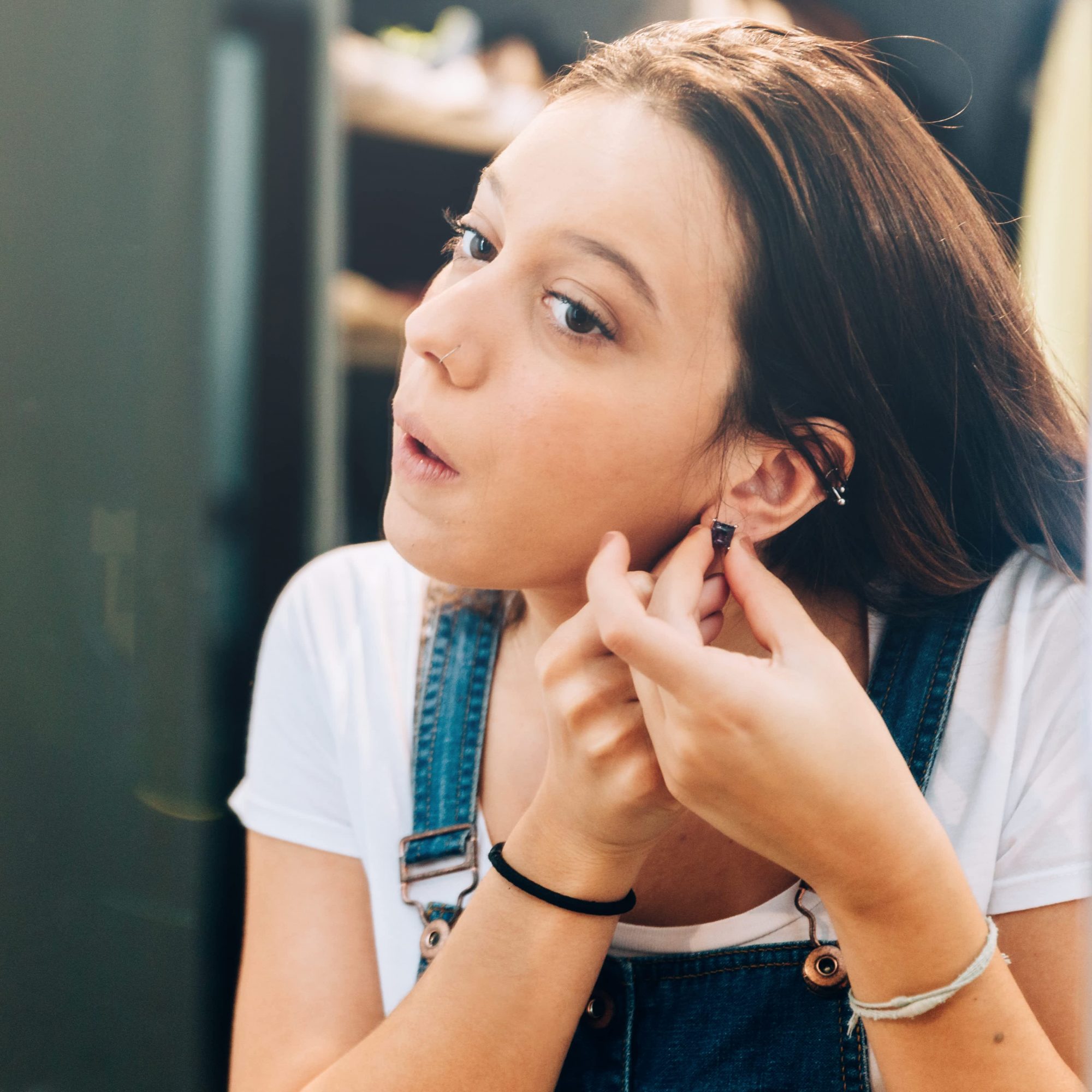
- POPSUGAR Australia
- Beauty
- Your Question, Answered: How Long Does It Take For a Nose Piercing to Heal?
Your Question, Answered: How Long Does It Take For a Nose Piercing to Heal?

As someone who had a nose piercing for 12 years, I understand the allure. It allows you to make a statement (thanks to its prime position on your face), but can still be subtle. There is an abundance of fun jewellery options too, with all matter of rings, studs, colours and patterns available. You can change your nose piercing just as you change your earrings.
Before you can get to this stage, you have to allow your piercing to heal. Just like when you get your ears pierced, there’s a period of time where you can’t change the stud your nose is pierced with in order to let the healing process begin.
Thinking of taking the plunge and getting your nose pierced? Here’s what you need to know before you make your appointment.
How long does it take to heal?
Keep in mind that the healing process can vary from person to person, but generally, a nose piercing takes about four to six months to heal. It has to go through a few steps to reach this point, as your body has to adjust to the foreign body you have placed within it.
During the first few days and weeks, you’re bound to feel a little pain and tenderness around the area and it might even bleed at times. This is all pretty normal. You might also notice the piercing is swollen, which is your body attempting to reject the piercing but again, this should go down after a while.
After a few months, you might notice a little bump form next to the piercing — either on top of your nose or inside your nostril — according to Healthline, this is made of lymph, blood plasma and dead blood cells, which will eventually harden as your body starts the scarring process. I experienced this in the months after having my nose pierced but it did eventually disappear as I left it alone.
Finally, six months later, your piercing should be fully healed and you’ll now be able to swap out your jewellery without compromising the piercing or experiencing any pain or discomfort. At this stage, some people may be able to take their nose piercing out for periods of time and the hole stays open.
That wasn’t the case for me and the few times my stud fell out during the night, I had to essentially re-pierce it the following morning as skin had begun to grow over the piercing. It wasn’t pleasant. So, if you’re keen on keeping the hole open, make sure you don’t leave it without jewellery for long periods of time.
How to care for your piercing
You should receive detailed aftercare instructions following your piercing appointment, but here are a few steps to keep in mind. Try to avoid touching your nose piercing, and if you must, make sure to wash your hands thoroughly with soap and water beforehand.
Rinse your piercing once or twice a day with a mixture of warm water and salt. I used to mix a little bit of both in a bowl and gently dab it around the piercing with a cotton pad or cotton ball. Then, finish it off with a few sprays of antiseptic Ear Care Pump Spray ($8.49) — you know, the one in the white bottle with the green and pink writing? If you had your ears pierced as a child in a chemist, you know the one I’m talking about.
How to tell if it is infected
If the piercing looks red, feels itchy, begins to emit a bad smell or discharge that is yellow or green coloured, it might be infected. The best way to tackle this is by taking a cotton tip and wetting it with warm water to gently clean away any crust that is around the piercing site.
Then, make the salt and warm water solution and using a cotton ball, apply it to the area. Repeat this process two to three times a day. If the infection doesn’t seem to be improving, it’s time to make a trip to the GP to discuss next steps, which might include antibiotics.
When can I change the jewellery?
It’s best to listen to the advice of the person who pierced your nose, as they are the authority on the subject but in most cases, it’s best to wait until the four to six-month mark. Allowing your piercing to fully heal lowers the risk of it also becoming infected.
Another factor in this process is the type of jewellery used at the time of piercing. A thicker stud can take a little longer to heal versus a thinner stud, so try to opt for a slightly smaller piece of jewellery when getting your nose pierced.


